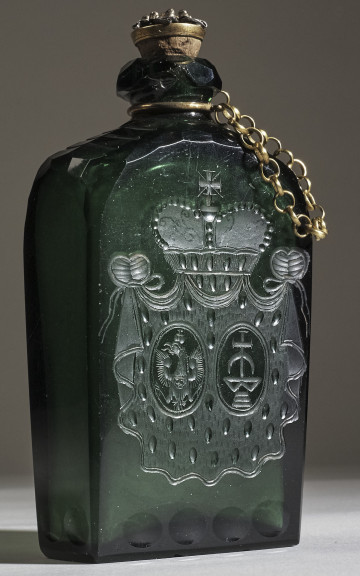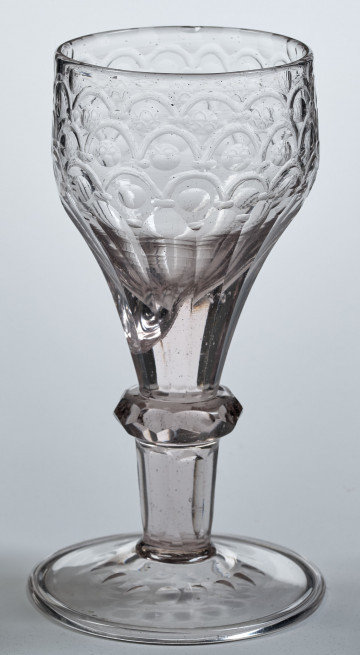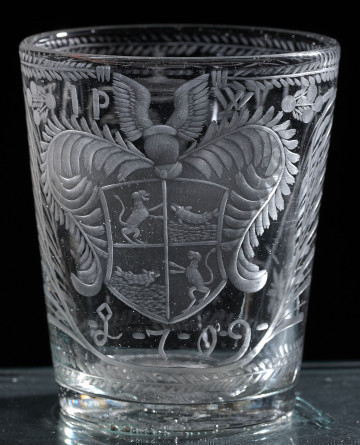
Bottle with the coat of arms of "Trąby" and "Waga"
18th century
Castle Museum in Łańcut
Part of the collection: Glass
The drinking flute was made in the middle of the 17th c. in Saxony. Saxon products did not turn up in the Łańcut Castle's eighteenth-century glass collection accidentally. During the period of the personal union between Saxony and Poland, Saxony supplied Polish glassworks with specialists and treated Poland as an export destination for its products. Saxon glass was also purchased by the Polish magnates during their frequent trips to Dresden. The above drinking flute was made of glass with a bright straw tint. The glass has a large, round foot with a curled edge, a hollow baluster stem, and a slender, conical bowl. The stem and bowl are carved in horizontal oval facets arranged in rows and, in the centre of the bowl, there is a strip of diagonal facets. Barbara Trojnar
Author / creator
Dimensions
height: 19.5 cm
Object type
Glass
Technique
cutting
Material
glass
Creation time / dating
Creation / finding place
Owner
Castle Museum in Łańcut
Identification number
Location / status

18th century
Castle Museum in Łańcut

18th century
Castle Museum in Łańcut

Castle Museum in Łańcut
DISCOVER this TOPIC
Museum of King Jan III's Palace at Wilanów
DISCOVER this PATH
Educational path